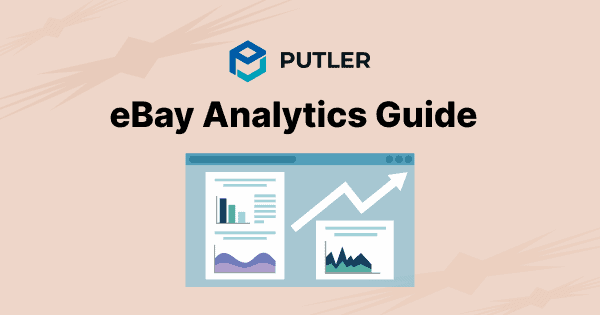For most small businesses, the task is complicated and challenging. Add to that other business functions, and it can seem overwhelming to sit down, extract data from your store’s backend, compile excel sheets, and sift through for insights.
What if there was a one-stop solution to get all the information you need alongside in-depth insights? It will condense hours and hours of work to a few minutes. And time saved is more money made. In the world of small businesses, this is precious.
So then, is there any tool well-equipped for this task?
For starters, we’ll look at eBay analytics and see if it helps.
What is eBay analytics?
eBay reports, also called Listing Analytics, are built for sellers to view listings’ performance. It provides data on key metrics such as rank, clickthrough rate (CTR), impressions, and more. These metrics help you navigate operations, answer any queries regarding your store, and develop improved strategies to increase sales.
Reports for sellers within eBay
eBay has different types of reports serving specific purposes. Let’s take a look below:
Sales
Sellers can track their sales alongside successful listings, sale prices and growth with sales reports. Using this, you can measure sales performance against goals and find opportunities to enhance your listings.
Sales reports include –
- Date of sale
- Sales record for number of sales generated
- Quantity of items sold
- Gross sales, i.e., the sum of sale price, shipping and handling
- Cost of each item
- Shipping charges to customer
- Shipping cost to seller
- eBay fees on the final transaction
- Payment gateway fees such as PayPal fees.
- Sales tax for each item
It’s important to note that as of 2025, Sales Reports are being phased out.
Seller performance
It’s not just sellers. eBay also wants to make sure buyers have a good experience on the platform. To that end, it tracks sellers’ performance and assigns them levels –
- Top-rated sellers are the best, providing exceptional customer service and meeting minimum sales requirements to enter the category.
- Above standard sellers meet some or all of the minimum requirements for customer service.
- Below standard sellers don’t meet one or more minimum requirements for customer service.
Some of the metrics tracked are Transaction Defect Rate, Late Shipment Rate, and Cases closed without Resolution.
Traffic
This is one of the eBay reports showing you how much traffic your store generates, which listings are popular, and how did people find these listings. Some of the metrics included are –
- Unique visitors for a given day or month
- Page views for each page
- Popular listings having the highest views
- Search engines that people used to reach your store or listings
- Search keywords that people used to find your store or listings
But, are eBay’s analytics enough?
eBay analytics provide good insights but don’t help plan business growth. Here are some key limitations:
eBay’s data doesn’t offer insights for taking action and crafting strategies.
- In-depth product insights are missing.
- It lacks integration with other eCommerce activities for a holistic business understanding.
- Customer insights are also not present on eBay’s analytics dashboard.
- Downloading multiple reports from different places can get time-consuming (up to 60 minutes!) and confusing.
- eBay only allows access to past 90 days data. If you want to run analysis beyond that, it isn’t available within eBay.
Get superior eBay analytics with these tools
Lucky for you, there are third-party tools aggregating analytics from your eBay account. These paid tools track more metrics and insights than in-house eBay reporting.
Zik analytics
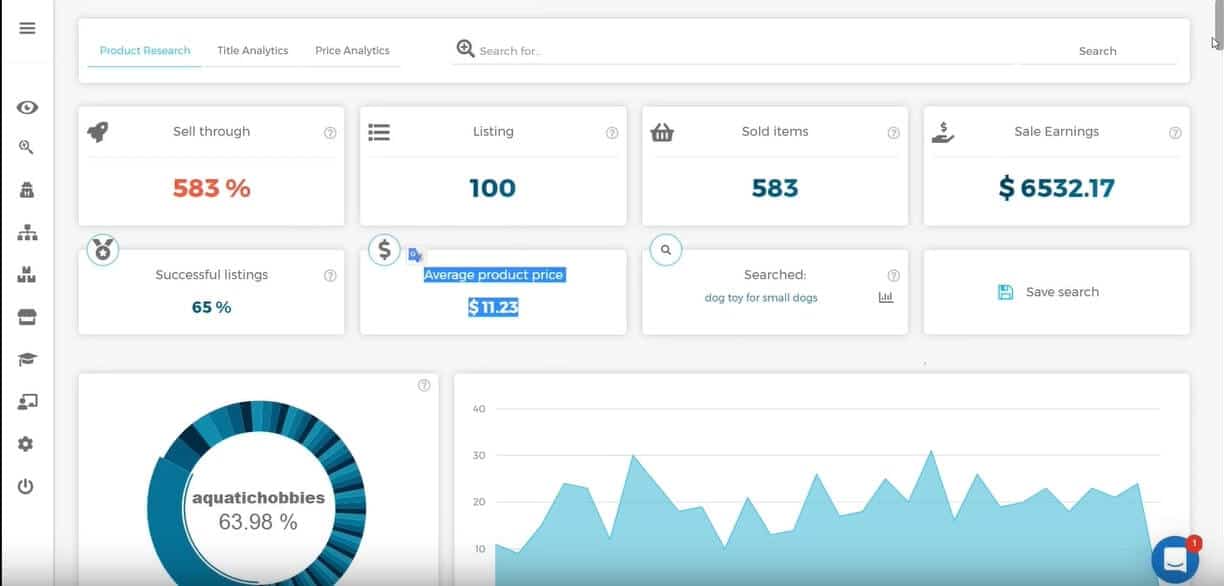
It’s a market research tool that helps you find what to sell on eBay. It does this by scanning competitor pages, finding best-selling item categories, and improving the search for your listings.
Price: Starts from $29.99 monthly
Pros
- Easy-to-use research tools
- Understand trends via competitor research
- Quickens sourcing for sellers
Cons
- Slow customer support
- Lags in software
- Billing issues
AlgoPix
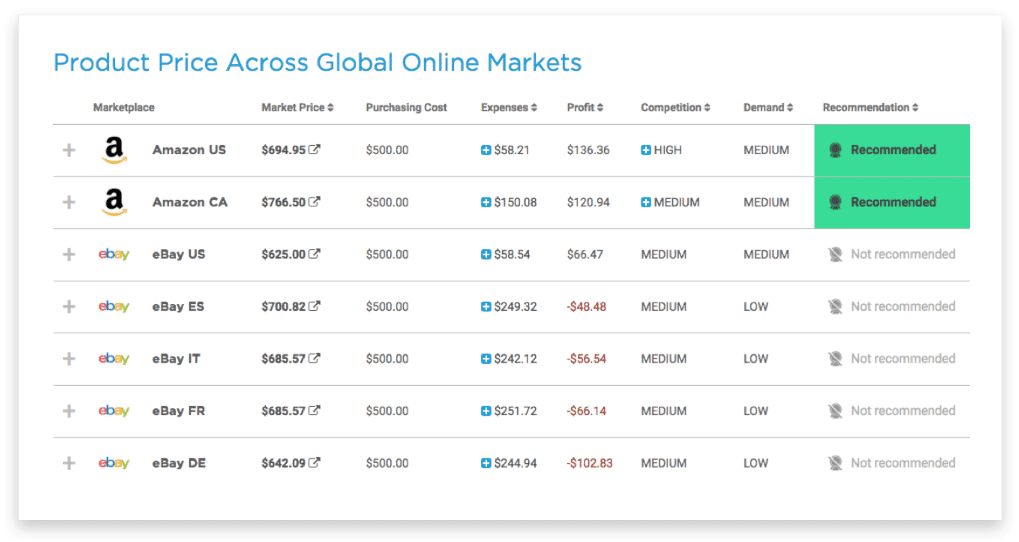
AlgoPix is one of the eBay analytics tools that provides data needed to make marketing decisions for your store. It gives insights into products, market requirements, and costs. Sellers can use this tool to find the right products to list on their store, identify the right markets, analyze the demand and even run competitor analytics.
Price: Starts from $34.99 monthly
Pros
- Analysis of multiple products in the eCommerce environment
- Relevant marketing insights from Google AdWord analysis
Cons
- No historic data available
- Categorical product data analysis is missing
- Lags in software
Putler
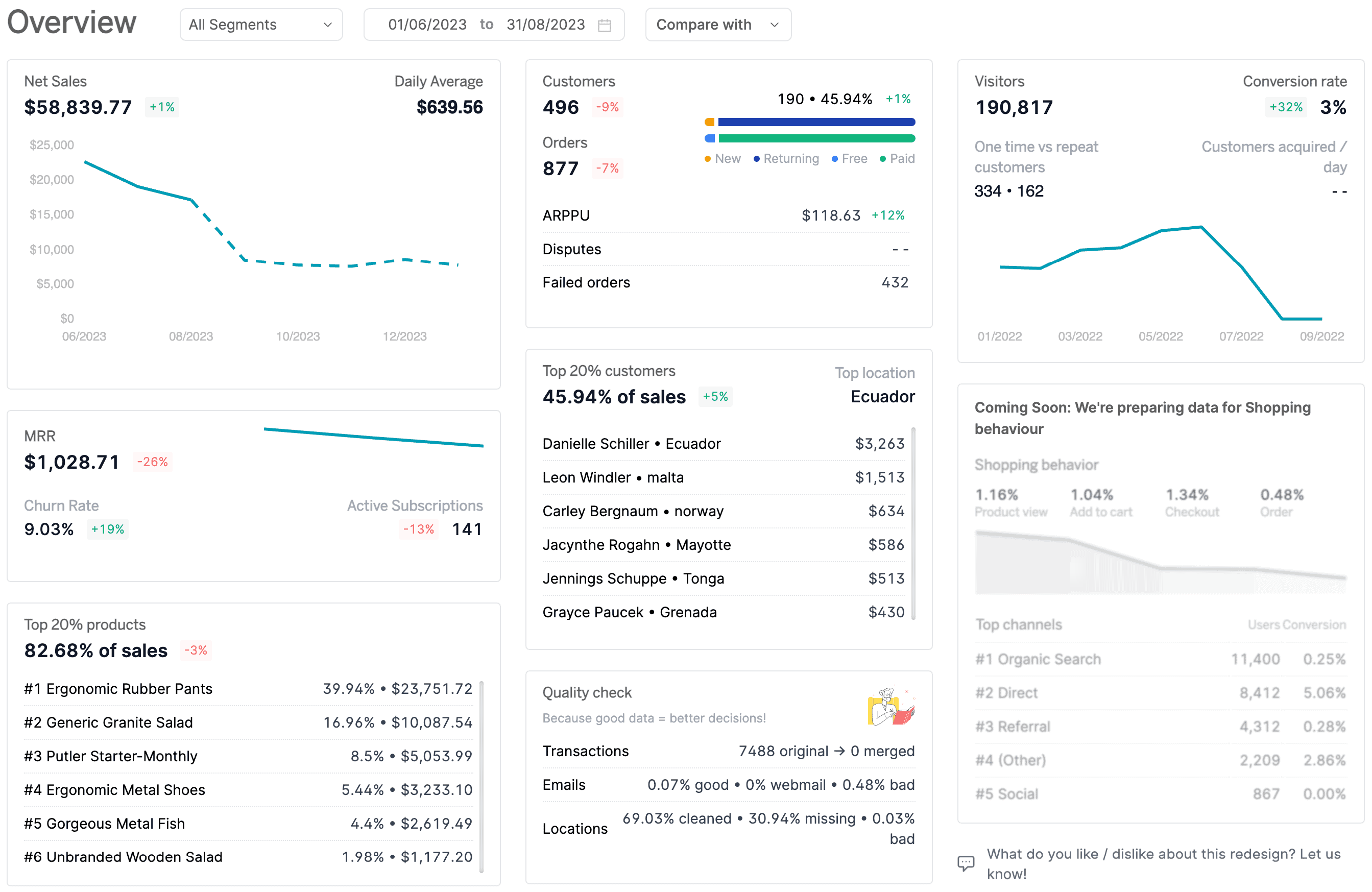
Putler is a consolidated eCommerce reporting tool that also shares eBay analytics. It helps you understand your business, take revenue-making decisions, and provide superior customer support for richer growth. The tool covers insights missing in eBay, alongside more useful KPIs for decision-making.
Price:
- Starter plan – $20/mo
- Growth plan – starts at $50/mo
Pros
- Robust product insights
- RFM analysis & customer segmentation
- Create custom segments and take data driven decisions
- Consolidation of multiple accounts
- Historical data is available
Cons
- No inventory reports
- Lack of standalone mobile application
So, which one should you choose?
Well, we’re a little biased when we say, “choose us!”
But don’t just go by what we say. Here’s a lowdown of how our tool is better than the other two eBay analytics tools and eBay itself:
Detailed reports
Putler’s analytics are robust and comprehensive, combining data from multiple eCommerce platforms (and multiple eBay shops) in one place. It captures revenue, sales, products and customer analytics through various metrics like recurring sales, revenue per day, daily average sales, and more.
Access to historical data
Most eBay analytics tools provide only real-time information. With Putler, you’ll also get access to historical data, which lets you analyze changes over time. eBay itself has a 90 day data restriction. But Putler solves that problem by storing historical data for future use.
This historical data can go back years so that you can check monthly and yearly performances, and make more accurate data-driven decisions. And it doesn’t just include sales. You can also view historical customer data for better customer support, product trends and a lot more.
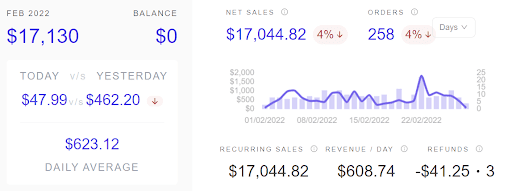
Extensive segmentation and drilldowns
You can create custom segments for products, selling locations, sales, revenue, price points and more. Putler also provides a ready to use customer segmentation technique called RFM segmentation. This method segments customers based on their shopping behavior.
There’s no upper limit on the number and type of segments, which gives you the freedom to choose what reports best serve your needs.
Intuitive insights
With so much information at your fingertips, it could get overwhelming to figure out how to use the data. But Putler solves that for you, too. The tool provides useful insights such as sales heatmap, products that are frequently bought together, product variation popularity, refund rate, sale velocity, daily data insight, order tracking, refunds and returns, average order value, recurring vs. one-time sales, and more.

Product reports
Updated top-selling product lists are good. But it’s even better when you can deep dive into ‘how’ you can improve your sales. With product management, you’ll find out
- Which product is trending?
- Which products sell the most?
- Which product is losing popularity?
- Which product variation sells the most?
- Which products do customers purchase together frequently?
- What are the average product price buckets?
- How much of your gross revenue includes refunds or returns?
- Why was a product returned?

Customer insights
Finding data on customers is a significant pain point for sellers. What makes Putler stand out is its in-depth analysis of your customers. It lists essential metrics such as Lifetime Value (LTV), Churn Rate, and Recurring Sales.
You can also view information regarding specific customers, including demographics, customer support history, website screenshots, subscriptions, refunds or returns, and geolocation. Still, want more? Then check our RFM analysis, which other eBay analytics tools and eBay itself don’t provide.
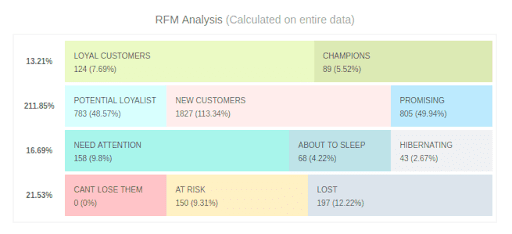
Google analytics integration
Putler lets you integrate your Google Analytics data into the platform, giving you a holistic understanding of your overall store performance. You can easily view search-related information for your listings.
Managing multiple stores
Have multiple eBay stores, or are you planning to scale? You can manage them seamlessly from one place. From monitoring all of them on one dashboard to viewing individual reports for each, we’ve got you covered. You can also compare performances between stores and find insights for taking further action.
Multichannel, multi currency and multi team support
Putler doesn’t just serve eBay stores. You can consolidate multiple stores functioning through various channels.
And when it comes to international payments, our tool supports several currencies. Putler will automatically take care of currency exchange and time zone changes, and provide you reports in your base currency at all times.
Plus, your store will have support using features for multiple team set-ups within one dashboard.
The bottom line of eBay analytics
eBay’s analytics are a good starting point to gather data regarding your store. However, if you’re looking to expand your business horizons, it’s best to invest in a tool that becomes your partner for success.
Putler isn’t your standard analytics tool. With its extensive insights, it’ll help you understand your business better and possibly even find exciting opportunities to explore. Get in touch with our team for customized solutions!
- Multiple eBay accounts: The only guide you need
- [Ultimate Hack] How to export over 90 days of eBay data?
- Etsy vs eBay: A Deep Dive Into The Best eCommerce Marketplace
- 8 Best eBay Tools for Sellers in 2025
